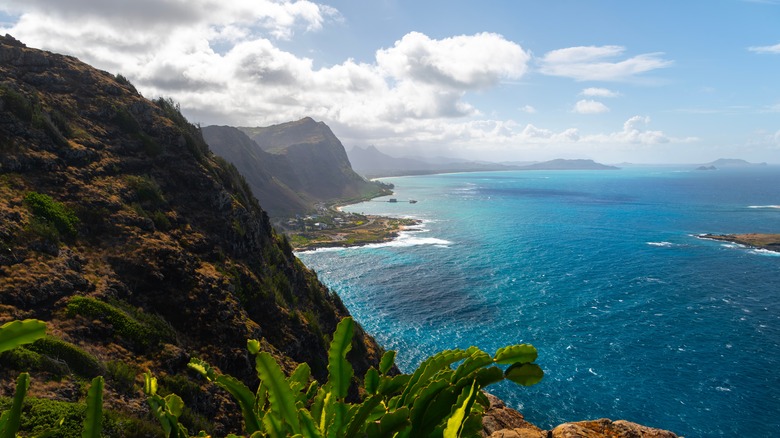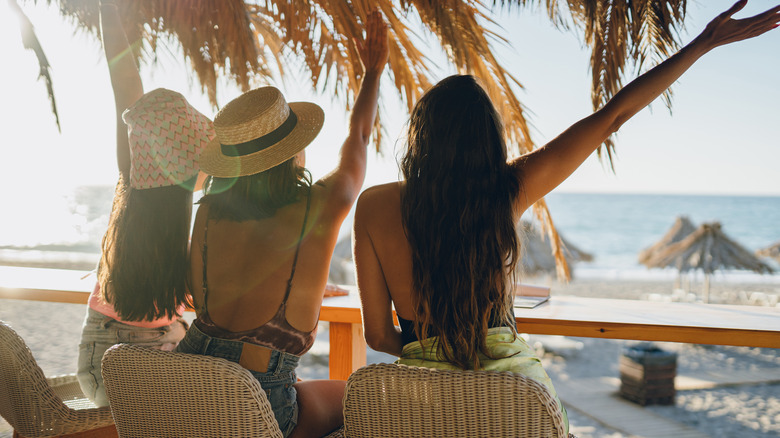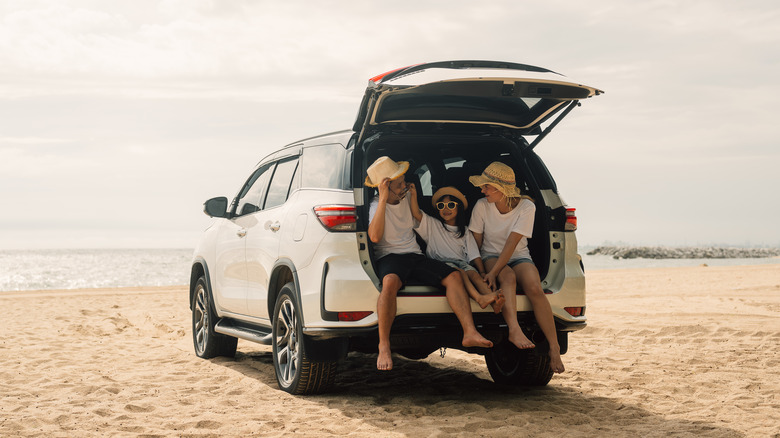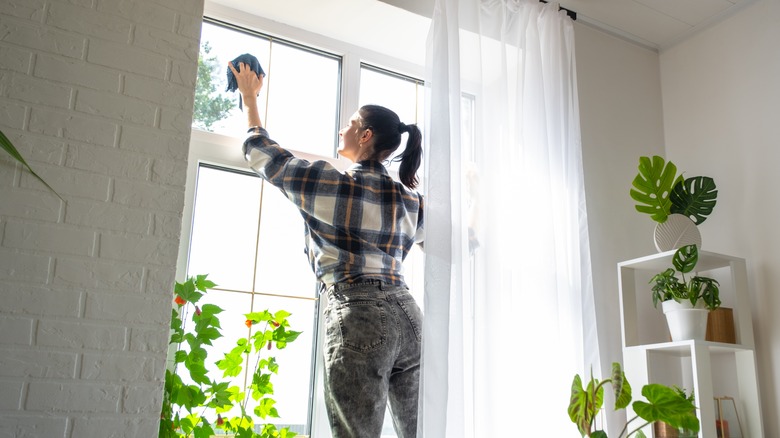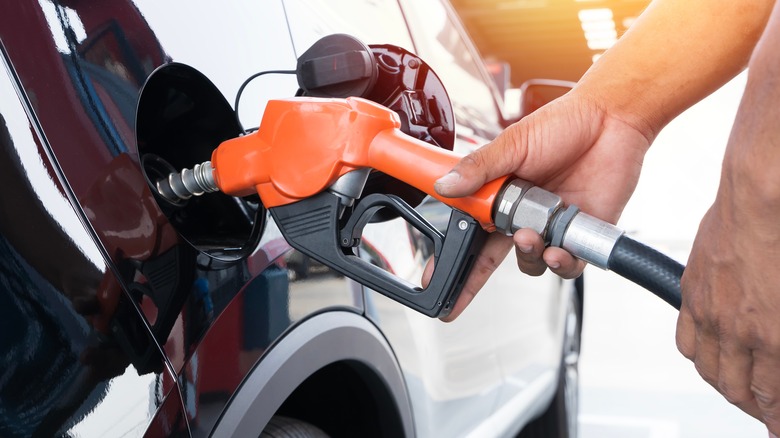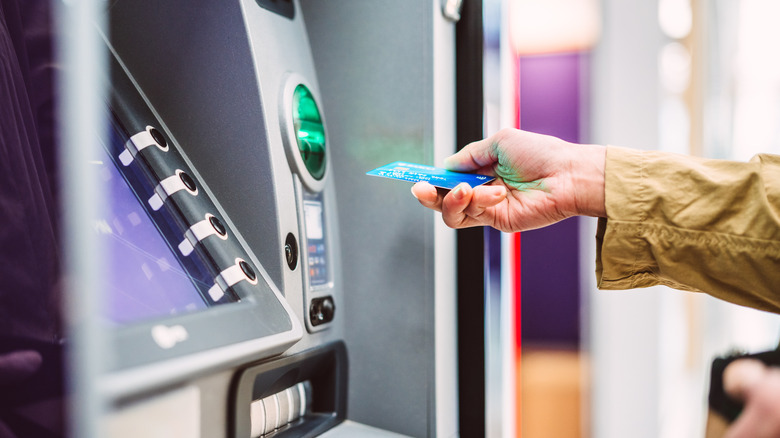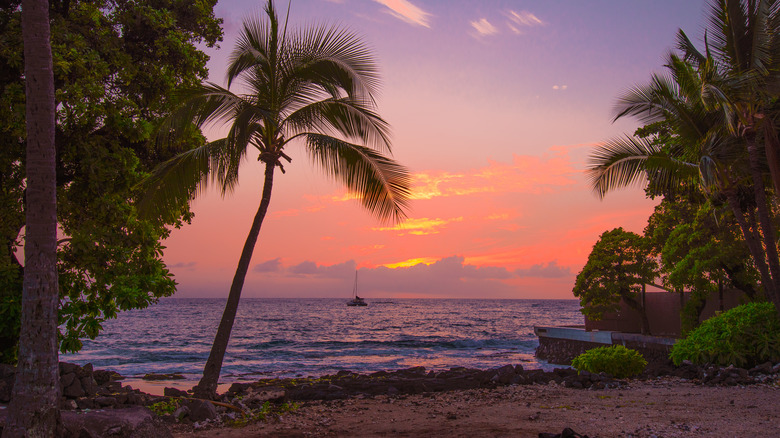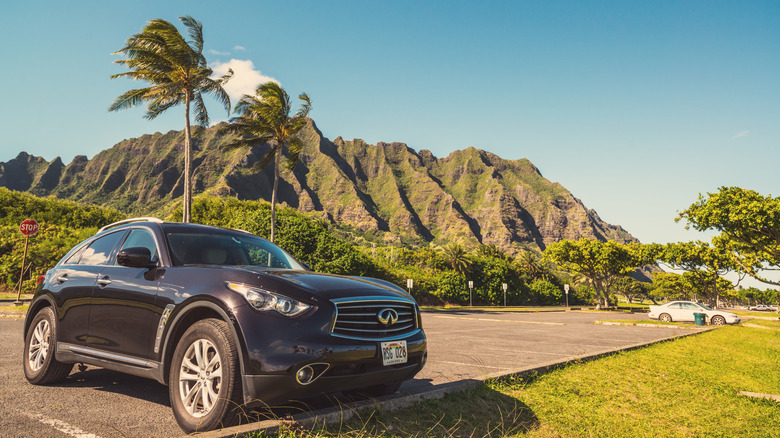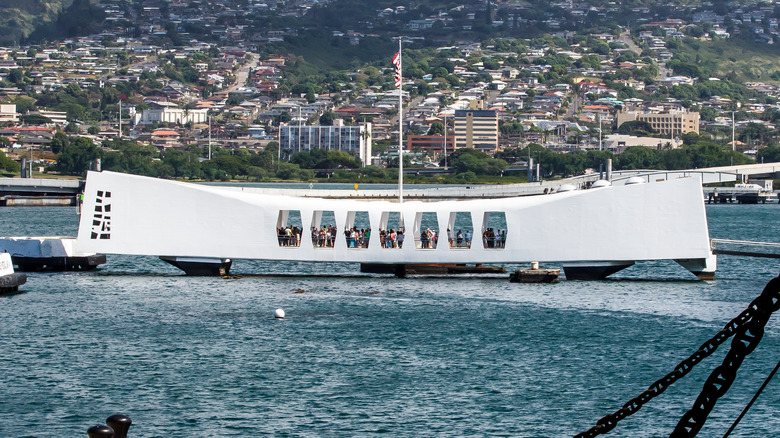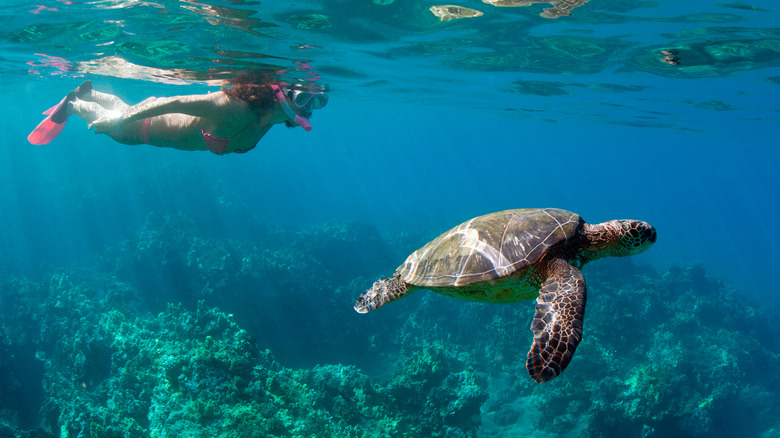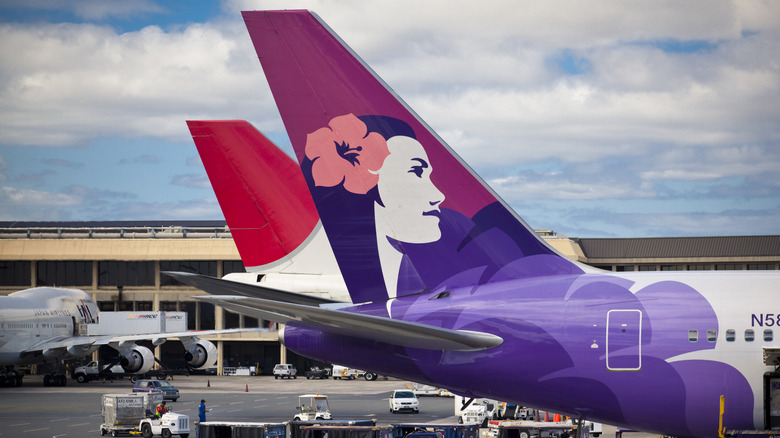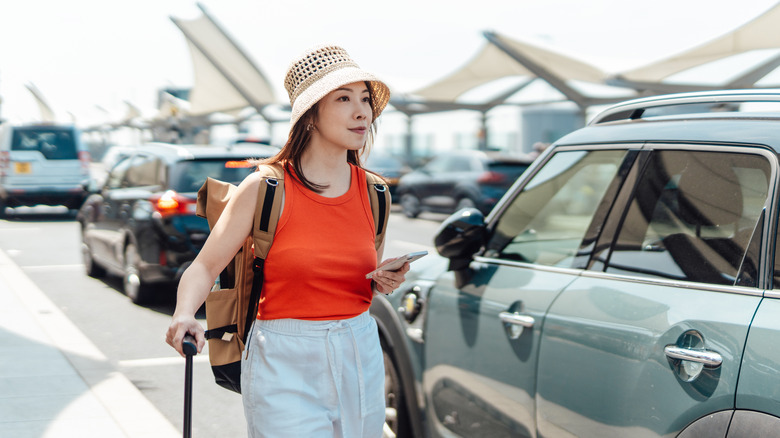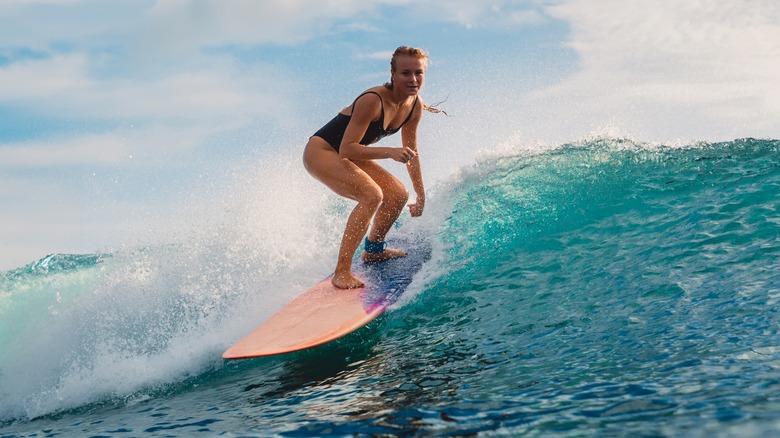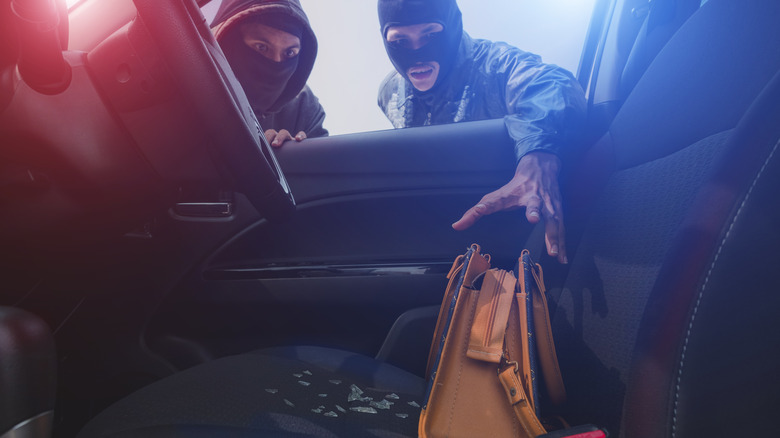Tips To Avoid These Sneaky Expenses On Your Trip To Hawaii
Hawaii is widely considered one of the most beautiful places in the world, but getting a taste of paradise sometimes comes at a steep cost. The islands have a reputation for being incredibly expensive not only due to the breathtaking views and luxurious resorts they provide — but also because they are the most remote island chain on the globe. But it's not just groceries, gas, and excursions with steep price tags in the Aloha State. Tourists often find themselves surprised by numerous hidden fees while vacationing in Hawaii.
Travelers headed to the Hawaiian islands should do their due diligence to verify their invoices and check for unforeseen costs. Companies on the islands are known to tack on extra costs that may not be explicitly explained or mentioned during booking. While it's said you have to pay to play, tourists should budget ahead and do their research to avoid a not-so-Aloha-filled vacation. Lucky for you, we've given future Hawaii visitors a head-start on how to save money on the islands and avoid the sneaky expenses that tourists typically encounter.
Be aware of hidden resort fees
While booking a resort stay is the way to go for many individuals visiting Hawaii, sometimes these seemingly all-encompassing retreats aren't so all-encompassing after all. Tourists have found that using the pool, extra towels, or even certain cabana chairs can mean another fee tacked on to the room bill. Not to mention these costs are typically added at check-out, which can lead to a surprise if guests are unaware they are required to pay daily mandatory fees upon booking their stay.
These resort fees are often disguised by names like "amenity fee" or "utility fee" and can include everything from free domestic calls to use of the pool. While a quick Google search of a potential hotel name and "resort fees" usually does the trick in letting a tourist know what will be applied to their total bill, make sure to read the terms and conditions and fine print before clicking "pay." Sometimes these hidden costs may be hard to find, or not explicitly outlined for the customer unless they do a bit of digging.
Vacuum out sand in rental cars
Another thing for tourists to watch out for is extra fees tacked on to their car rental bill. According to analysis by Kayak, it's actually cheaper to rent a car at the airport in Hawaii than from a location away from the airport. For those wanting a bit more flexibility, Turo is available, which sometimes offers car rental prices cheaper than traditional companies as the vehicles are rented out by private individuals.
Hawaii visitors should be wary of tracking unwanted sand in their car rentals, too. One Budget Car Rental customer recalled her unfavorable experience on Tripadvisor renting a vehicle on the Big Island, admitting she was charged an "excess interior dirt" fee after the agent had previously approved the car after inspection. "Budget should have at least indicated some problem when I returned the car, but the attendant saw inside and outside of car and told me all was fine," she wrote. "(We kept car clean — no kids or eating in it.) I have called the company twice and written them a letter, but they are not Budgeting (budging)."
Shop locally to avoid an expensive grocery store haul
Visitors browsing the aisles of grocery stores on the Hawaiian Islands may be surprised at the prices they find. Because of Hawaii's remote location, food products are considerably more expensive than on the mainland. According to The Hawaii Vacation Guide, prices of grocery store goods are 68% steeper on Maui than on the mainland. Other islands aren't much better, as AreaVibes reported that grocery store prices are 57% higher in Hilo, a city in the northeastern region of the Big Island.
So what exactly is costing grocery shoppers in Hawaii? According to LivinginHawaii.com, staple goods like milk and eggs can be over double the price on some Hawaiian islands when compared to the national average. A gallon of milk purchased in Honolulu runs an average price tag of $6.79 when compared to the national average of $3.77 found on the mainland. A dozen eggs are no different, with an average $4.99 price in Honolulu compared to the national average of $2.80. A solution for travelers to save a dime is to shop at retailers like Costco or Target, which customers have notably marked as cheaper options than when compared to chains like Safeway or Foodland.
To avoid a steep shopping bill, tourists can do a quick Google search to find their nearest farmers' market. The Hawaiian Islands are known for their incredible selection of fresh fruit and produce, and travelers may find they're able to save a buck when they grab their haul from a local vendor.
Check the cost of cleaning fees before booking your rental
Cleaning fees in Hawaii can be so insanely expensive on rentals that many tourists question whether or not they're being scammed. One tourist visiting Oahu complained about exorbitant costs on one particular stay, writing on Tripadvisor, "I just checked on a beautiful little place on the North Shore of Oahu. Studio cottage, $200/night but the cleaning fee was $150. That's almost another night's rent." In Kauai, these prices can be even more expensive, with the Aston at Poipu Kai charging a "one-time Departure Cleaning Fee" that starts at $180 for single bedrooms and $250 for two bedrooms.
As listed by Travel-Hawaii.com, these high cleaning fees are standard across all the Hawaiian Islands. The reason behind the costly maid fees is due to the incredible demand that exists for traveling to and vacationing in Hawaii, as well as the state having the highest cost of living in the nation, as per USA Today. When booking your vacation rental in the Aloha State, be sure to read the fine print, as these cleaning fees can sometimes be found in smaller print near the bottom of the page and not as readily advertised.
Choose a more economical rental car to avoid high fuel prices
Another aspect of the Aloha State that tourists may not be prepared for is the gas prices. Hawaii is listed as the second highest state in the nation for gas prices, right behind California with an average price per gallon of $4.79, as per U.S. News. GasBuddy.com lists some of the cheaper options to fill up being Costco and Sam's Club, but the gas pumps are only available to store members.
Kendal Perez, a savings expert for Coupon Sherpa, suggests downsizing in order to save during your vacation. "By avoiding the upsell during our trip to Kauai, my husband and I managed 41 mpg and were thankful for our small rental car's ability to navigate the sometimes narrow, windy roads," she said (via Las Vegas Review-Journal). Sheila Beal, editor of GoVisitHawaii.com, advised against the 4x4 Jeeps that are popular choices for tourists, admitting that the off-roading capabilities are usually prohibited by rental companies, thereby making them a more expensive yet less resourceful option.
Budget for ATM fees or take cash with you
Those traveling to Hawaii should be aware that many banks on the mainland don't have branches within the Hawaiian Islands. This means travelers will need to prepare to bring enough cash on their vacation or budget ahead for ATM fees. Tourists won't find any Bank of America, Wells Fargo, or Chase locations or ATMS within the islands, as these companies haven't expanded as far into the Pacific. The main banks within the Aloha State include First Hawaiian Bank and Bank of Hawaii, along with American Savings Bank, Hawaii National Bank, and other local branches.
ATM fees are estimated to be especially high at the airport, according to Offers.com savings expert Kerry Sherin (via GOBankingRates.com). One Tripadvisor user suggested using a debit card to get cashback in gas stations or stores offering the feature as a way to avoid spending extra dough each time you need to withdraw cash. "You can get cash-back at Long's and grocery stores," wrote the suggestion. "If I use an ATM, I pull out as much as I can to avoid multiple transaction fees."
Plan ahead for extra renter taxes
Tourists planning their trip to Hawaii should know about the Transient Accommodations Tax (TAT) that applies to the islands. TAT is a 10.25% tax on the total gross profits of rental properties rented for less than 180 days. This tax is added to the booking price, so if a room is $200 a night, the extra TAT tax would be an additional $20.50 each night.
However, this doesn't even count an additional TAT that's tacked on for the specific islands, as well as a general excise tax (GET). For example, if you choose to rent a hotel suite or short-term stay in Oahu, you would be paying the nightly price for the lodging, the 4.712% Hawaii GET, the 10.25% Hawaii TAT, and a separate Oahu Transient Accommodations Tax which falls at 3%, making a total of nearly 18% in extra taxes, according to Halepuna Waikiki. Rentals on other islands — like Maui — would show a similar tax structure, give or take a few decimal points due to different counties having slightly different GET rates.
Watch out for parking fees and be sure to skip the valet
Parking fees can be incredibly frustrating for tourists during their Hawaiian vacations, but they are unfortunately one of many things to watch out for. According to Parkopedia, some hotels require guests and visitors to use valet, which can incur up to a $50 bill in just two hours. Even using shopping parking lots or business lots around Waikiki can cost visitors an arm and a leg, with estimated parking fees for just two hours being around $12. Hotel parking isn't cheap either and can be anywhere from $30 to $50 each night.
Waikiki, for example, can have meter rates of between $1.50 to $3 an hour. However, these spaces are usually scarcely available due to the demand, and you run the risk of getting towed if you don't follow the rules listed on nearby signs. Street parking is available each day from 6 a.m. to 10 p.m., so pay attention to getting back and forth to your car and give yourself enough time inside the parking window. Visitors can also ask restaurants and bars if they offer parking validations, which can end up reducing parking fees.
Avoid paying fees for tours that are available for free
One tourist trap that has travelers paying more when they could be paying less is unnecessary tour fees. The Pearl Harbor National Monument, for example, is free for visitors, so long as they make a reservation online ahead of time. Several tour operators offer tours that include a trip to the USS Arizona Memorial which can cost around $50, advertising a guaranteed reservation to the site, and a tour guide to help guide. Many tourists unknowingly book these tours thinking they need to pay to enter Pearl Harbor, without doing their research first.
There are several free things to do around the Hawaiian Islands, from whale watching from the shore to watching cliff diving ceremonies. Hiking is also a good alternative for tourists looking to get amazing views of the island without breaking the bank. There are several hikes throughout Hawaii that are either free (aside from a small parking fee) or require a $10 or less reservation fee. Just be wary of this notorious hike on Oahu that was shut down for being too dangerous.
Buy your own snorkel gear
Hawaii is on the list of the world's 10 best islands for snorkeling, making it a popular activity for many beachgoers. But before you jump into those crystal clear waters, you may want to think about buying your own gear beforehand. While several local shops and tour companies offer snorkel sets from anywhere from around $10-$14 a day, some travelers end up paying weekly rates for the gear that can have a price tag of around $80. Instead of spending the money renting, a handy solution is to buy your gear at a local CVS or Walmart, where it's typically cheaper than spending money on gear you can't actually take home.
"I can't speak for the mainland but on Ohau [sic] Walmart has cheap sets — under $10 — mask and snorkel no flippers, I expect Target may too. Costco also has sets including fins," one user wrote on Tripadvisor. Be sure to check the specialty dive shops in Hawaii for prescription masks, however, as those may not be offered at larger wholesale retailers.
Buy your inter-island plane tickets in advance
There is no main ferry service between the Hawaiian Islands (besides one offered between Maui and the small island of Lāna'i) making planes essential for inter-island travel. But tourists should be aware that prices can add up quickly regarding the costs to travel among the islands, so booking ahead is recommended by many. Hawaiian Airlines, Mokulele Airlines, and Southwest are the only airlines offering inter-island flights, and prices can sometimes cost up to $239 per round-trip ticket.
A way to avoid these fees is to plan and book as soon as you know your travel planes. Oftentimes, these companies run deals throughout the year that customers can take advantage of to score lower rates. "I'm flying from Kauai to Oahu at the end of December and just booked that a week ago. I average 3 months ahead for inter-island flights," wrote one traveler on Tripadvisor. "I probably wouldn't book any sooner than that."
Skip the airport shuttles and use rideshare apps
Many tourists visiting Hawaii think booking an airport shuttle to and from their lodging is the best option, but they end up spending much more than a typical Uber or Lyft. A shared shuttle from Honolulu to Waikiki can run a price tag of $50 for two, $75 for three, and $100 for four people. Private shuttles are even more expensive, with rates of around $40 per person for the same type of trip. Metered taxis can get quite pricey as well, and despite a trip from the airport in Honolulu to Waikiki being an estimated $40-45, unpredictable traffic could jack up the price.
Travelers are better off taking an Uber or Lyft, which are both available on major Hawaiian Islands like Oahu and Maui. According to Uber.com, the average price for a regular ride from the Honolulu International Airport to Waikiki is $32 and accommodates up to four people. By giving yourself enough time to factor in any traffic, rideshare apps can end up saving travelers a steep bill to and from their stays without having to pay per family member.
Rent your surfboards, don't ship them
Surfing the waves in Hawaii is usually a bucket list activity for many travelers, but you don't need to break the bank by paying to ship a surfboard to the Aloha State. Airlines can charge as much as $75 per board per flight, making it an expensive item to tow back and forth to the islands. But that doesn't even factor in the potential risk of damaging the surfboard along the way, which can lead to even bigger problems.
Many tourists rent surfboards during their trip to Hawaii to avoid extra checked bag fees. HawaiiSurfboardRentals.com offers surfboard rentals in the Waikiki area that include free pickup and delivery starting at $80 for two days or $140 a week. But even if you don't plan, many companies throughout the Waikiki Beach area offer on-site surfboard rentals for those wanting to hang loose. As for other Hawaiian islands, it's best to research ahead of time, but tourist-friendly beaches typically have surfboard rental companies available for those needing a board.
Stay vigilant about crime
One way to break the bank in Hawaii is to fall victim to crime. Unfortunately for tourists, the Hawaiian Islands are ranked No. 8 in the country for property crime, meaning there can often be trouble in paradise. Those traveling to Hawaii should be vigilant during their vacation and not leave any valuables in their vehicles, make sure to lock the car after parking, and to try to park in areas that are well-lit and visible. It's recommended tourists do not attempt to move more expensive items into their vehicle's trunk, either, as those are often victims of theft, or someone could be watching nearby and planning a hit.
According to Beat of Hawaii, Oahu saw 650 incidents related to car break-ins and theft in just a single month alone, and those were mostly reported around tourist traps like Honolulu and Waikiki. One Tripadvisor reviewer noted Oahu as being particularly noteworthy for theft, writing, "I spent one day sightseeing on Hawaii with all the stuff in the car, and we did not leave the car unattended. We saw numerous guys eyeing the car with that familiar look of unwarranted interest. My advice is not so easy to follow, but I would fix your itinerary. Transition days with all your stuff, combined with a bunch of sightseeing, are a mistake."
